Stop 1: Space shuttle models
Location: Exploring Space, Ground Floor
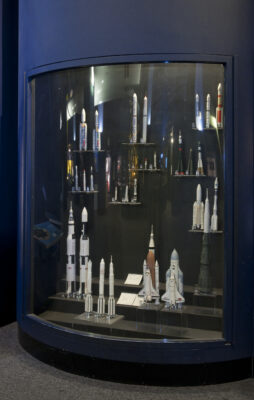
From the main entrance, walk through the museum until you reach the Exploring Space gallery. To your left, opposite the planet projection are a group of model shuttles.
Space flight has been and continues to be an exciting area of scientific discovery from the 1950s to the present. In the early days, very few women, let alone women of colour, had the opportunity to be at the frontlines of space exploration. Black scientists played important roles in NASA; however, their work and achievements were often invisible to the public. The 2016 film Hidden Figures tells the story of three such scientists, the first Black women at NASA – Mary Jackson, Katherine Johnson and Dorothy Vaughan. Over 30 years later, Dr Mae C. Jemison was the first Black woman to travel to space.
Jemison was inspired by Black American actress Nichelle Nichols who played Lieutenant Uhura on the television series Star Trek. She began applying to the competitive NASA astronaut programme and was determined to one day travel to space despite the odds. In 1987, Jemison was one of the 15 people chosen out of over 2,000 applications. She received her first mission on 28 September 1989 when she was selected to join the STS-47 crew as a Mission Specialist. On 12 September 1992 the STS-47 crew embarked on their journey on the space shuttle Endeavor, making Dr Mae Jemison the first Black woman in space.
Dr. Mae Jemison’s story is one of perseverance. As a Black woman in STEM, she faced discrimination and hurdles in her path, but she did not stop working towards her goal. Just like Jemison’s inspiration from Star Trek, it is important for young Black people to see others who look like them breaking barriers. These values continue to be central to Dr Jemison’s work encouraging young people into STEM careers.
Stop 2: Edison’s Electric Carbon Filament Lamp
Location: Making the Modern World, Ground Floor

Walk through Exploring Space until you reach the Making the Modern World gallery. Keep walking toward the lighthouse lamp on the right side of the gallery. To your left you will find a glass case with lightbulbs in it.
Who invented the lightbulb? Most people would say Thomas Edison, who in 1879 designed a filament lamp like the one in this display. But the real story of the invention may surprise you.
Before Edison unveiled his lamp in 1879, the English chemist Joseph Swan had already publicised a lightbulb with a similar design — you can also see an example of this bulb in the display. Edison’s design improved on Swan’s in two ways. Looking at the two lightbulbs in front of you, it’s difficult to see the improvements, but they were significant. Instead of carbonised paper, Edison used a sturdier carbonised bamboo for his filament. He also improved the vacuum inside the bulb. These improvements made the filament last much longer than Swan’s, giving Edison a claim to creating the first practical lightbulb.
But Edison’s design was not perfect. In 1881, the Black American inventor Lewis Latimer found a way to improve it. Latimer’s new design had better electrical contacts within the bulb and also made it cheaper to produce. The following year, Latimer patented a more efficient manufacturing process that reduced waste. This reduced the cost of making lightbulbs, so we have Latimer to thank for making lighting affordable to a wider public.
Latimer had no formal training in science, but he quickly made a name for himself in the lighting sector. He authored the book Incandescent Electric Lighting, which became the standard guide for lighting engineers. He began working with Edison in 1885, and in 1918 became the only Black person to join the Edison Pioneers, a small group of Edison’s early collaborators.
Stop 3: Nintendo Gameboy
Location: Making the Modern World, Ground Floor
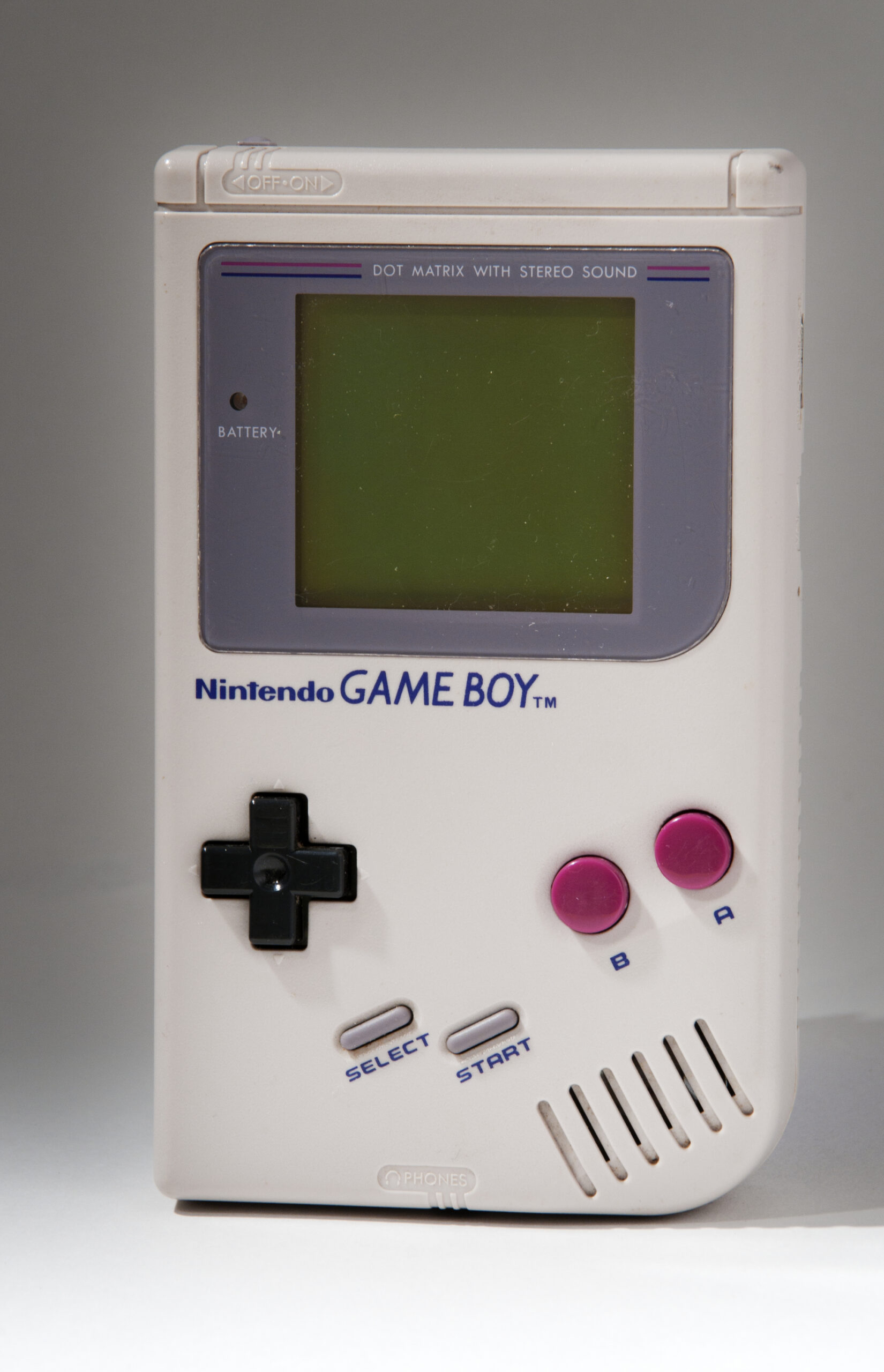
Continue walking through the gallery, on your right hand side will be a display case called Technology in Everyday Life c. 1968-2000.
The Game Boy, seen in the lower right corner of the case, was first released in 1989 in Japan and was Nintendo’s second handheld gaming console. It gained popularity partly due to its expansive library of 1046 games available via game cartridges, also known as Game Paks. However, having such a wide choice of games was not always an option. Dubbed the ‘father of the videogame cartridge’, Gerald (Jerry) Lawson, was an electronics engineer who helped to revolutionise videogames.
The first games consoles, like the Magnavox Odyssey, had the games wired into the consoles’ internal circuitry. Game cards altered the inbuilt circuitry when slotted in, allowing for different games to be played, but the information was still held in the console. This limited the range of games which people could play as well as how complex they could be.
In the early 1970s, Jerry was hired by Fairchild Semiconductors. Despite his lack of formal qualifications, his strong coding and engineering skills were soon realised by the company. He was appointed to lead the development of the Fairchild Channel F gaming console. Under Jerry’s leadership, the Fairchild team used PCBs, printed circuit boards to create ROM (read-only memory) cartridges. The console was the first to have interchangeable games cartridges and paved the way for other gaming companies.
After this success, Jerry Lawson left the company and founded Video Soft, the first Black-owned video game company. Sadly, the company didn’t last long due to the video game crash in the 1980s. Despite this, his legacy has remained through the technology he helped develop and the people he inspired.
If you would like to find out more about the history of gaming and have a go playing classic games to new releases, the hands-on gaming experience Power Up located on level -1 is open daily.
Stop 4: Smallpox Vaccination display
Location: Medicine and Communities , Level 1
Make your way up to the first floor by the stairs or the lifts. You will enter Medicine: The Wellcome Galleries. Walk through and take the left fork when the gallery splits into two balconies, entering the Medicine and Communities gallery. Look to your right until you see the smallpox vaccination glass display.
This display centres around Edward Jenner’s famous smallpox vaccine of 1796. Less well known, however, is how an enslaved West African named Onesimus first communicated the medical knowledge of inoculation.
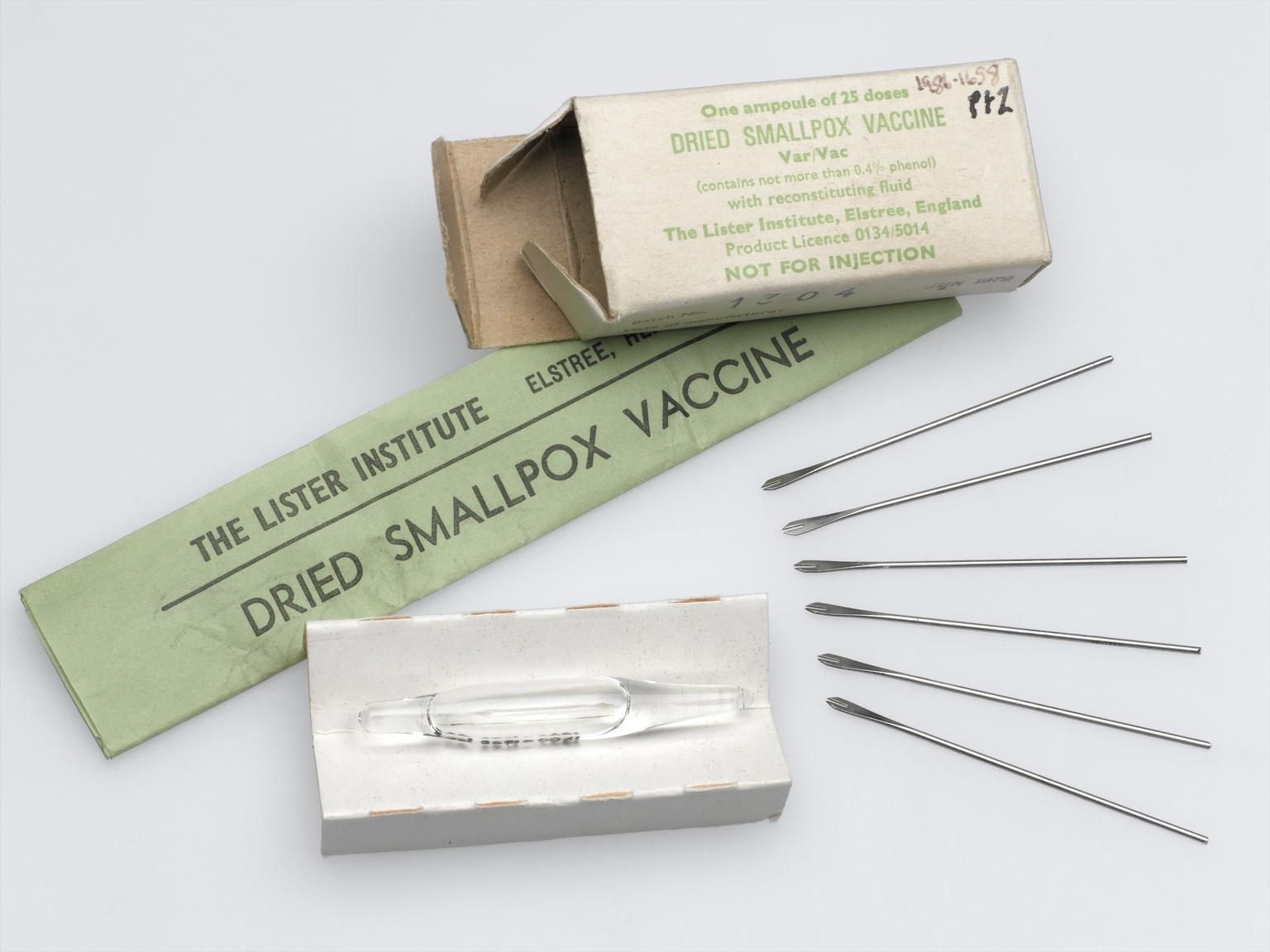
In the early 1700s reports of successful inoculation practices across the Ottoman Empire had been in circulation around Europe. In response to a particular report about Ottoman inoculation practices, Cotton Mather (1663 – 1728), a minister from Boston, Massachusetts, stated in a 1716 correspondence that he had asked Onesimus if he had smallpox. Onesimus answered saying both ’yes and no’ and then told Mather about the operation he had undergone which had given him some of the smallpox to preserve him from it.
It is clear from Mather’s correspondence that inoculation was already being successfully practiced across Western Africa. Although Mather did not fully trust Onesimus at first, a 1721 smallpox epidemic in Boston allowed him and the physician Zabdiel Boylston to put Onesimus’ words to the test. Their test proved effective. Mather and Boylston’s statistical analysis revealed that out of the almost 300 people inoculated only 2% had died, in contrast to a fatality rate of 14% among those without inoculation. Although remaining a risky procedure, by the 1760s numerous European learned societies had endorsed smallpox inoculation. This ushered in an age of experimentation eventually leading to Jenner’s much safer vaccine.
Black scientists continue to be crucial to vaccine production today, take for example Dr Kizzmekia Corbett who led the development of the Moderna COVID vaccine. The next time you get a vaccination think of the role that Black people such as Onesimus – and Corbett – have played in helping to enable these live-saving procedures.
Stop 5: Saving sight
Location: Medicine and Treatments, Level 1
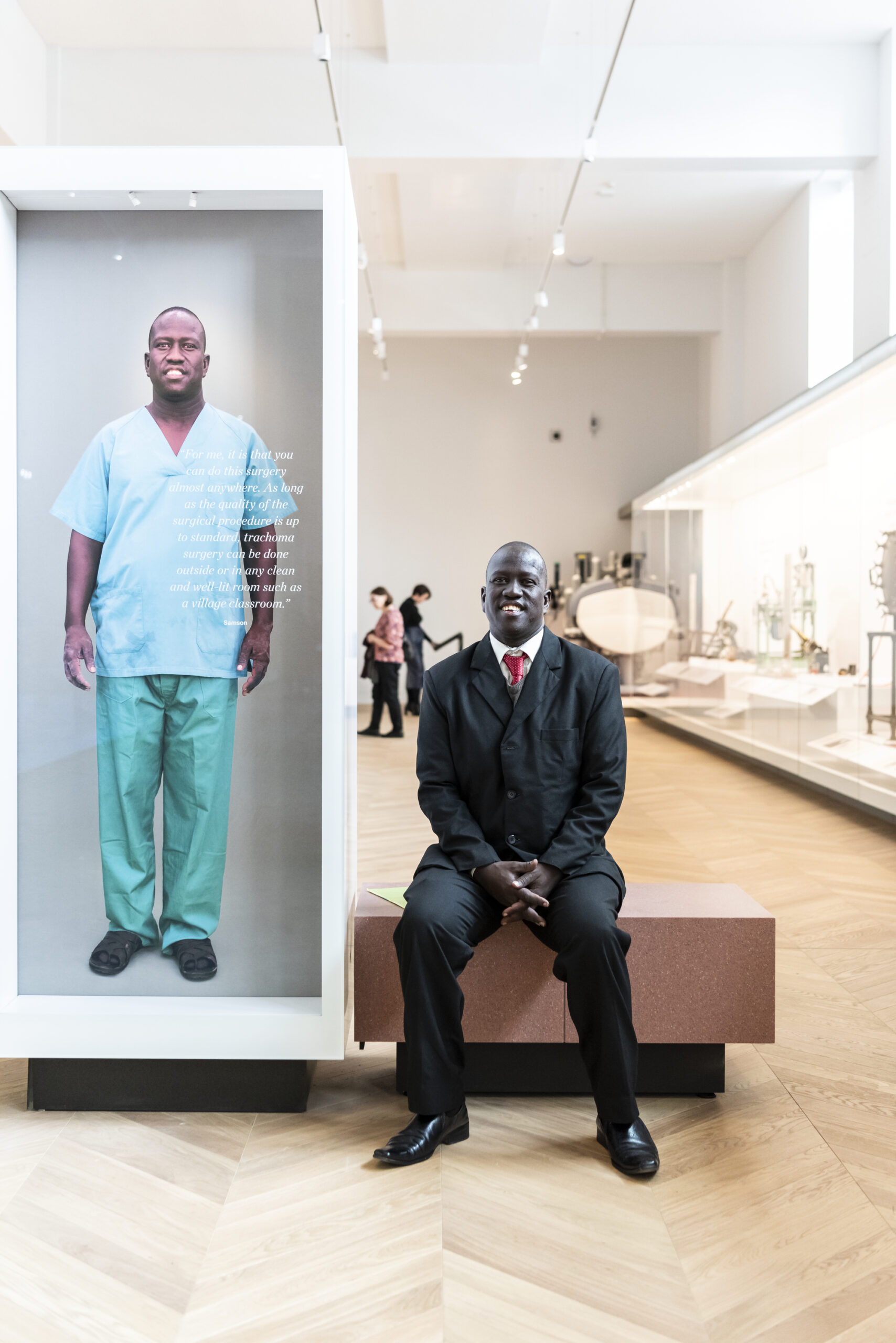
Make your way to the other balcony in the Medicine and Treatments gallery. Look for the life-size photograph of Samson Akichem Lokele, a surgeon wearing scrubs. Samson is an ophthalmologist who wants a world free from avoidable blindness. Supported by the charity Sightsavers, he travels across Kenya and Uganda to give people in isolated and nomadic communities access to eye surgery.
Samson performs surgery to treat trachoma – one of the world’s leading causes of blindness. Repeated trachoma infections cause the eyelashes to turn inwards, scarring the cornea. Without timely intervention this leads to irreversible blindness. Trachoma is responsible for the blindness or visual impairment of about 1.9 million people.
Trachoma spreads through personal contact and by flies who have been in contact with an infected person. 125 million people live in trachoma endemic areas and are at risk of trachoma blindness. When Samson started working in eye care in 2007, he became the first trachoma surgeon in Turkana, a region of northwest Kenya. Research in 2010 found that Turkana had the highest rate of trachoma of any district in the country.
But travelling surgeons like Samson provide hope. ‘You can do this surgery almost anywhere,’ says Samson. ’As long as the quality of the procedure is up to standard, trachoma surgery can be done outside or in any clean and well-lit room such as a village classroom.’ Because of this flexibility, Samson is able to take surgery to the patient – providing treatment to people who might not otherwise have access to this sight-saving procedure.
Stop 6: Kola Nuts
Location: Exploring Medicine, Level 1
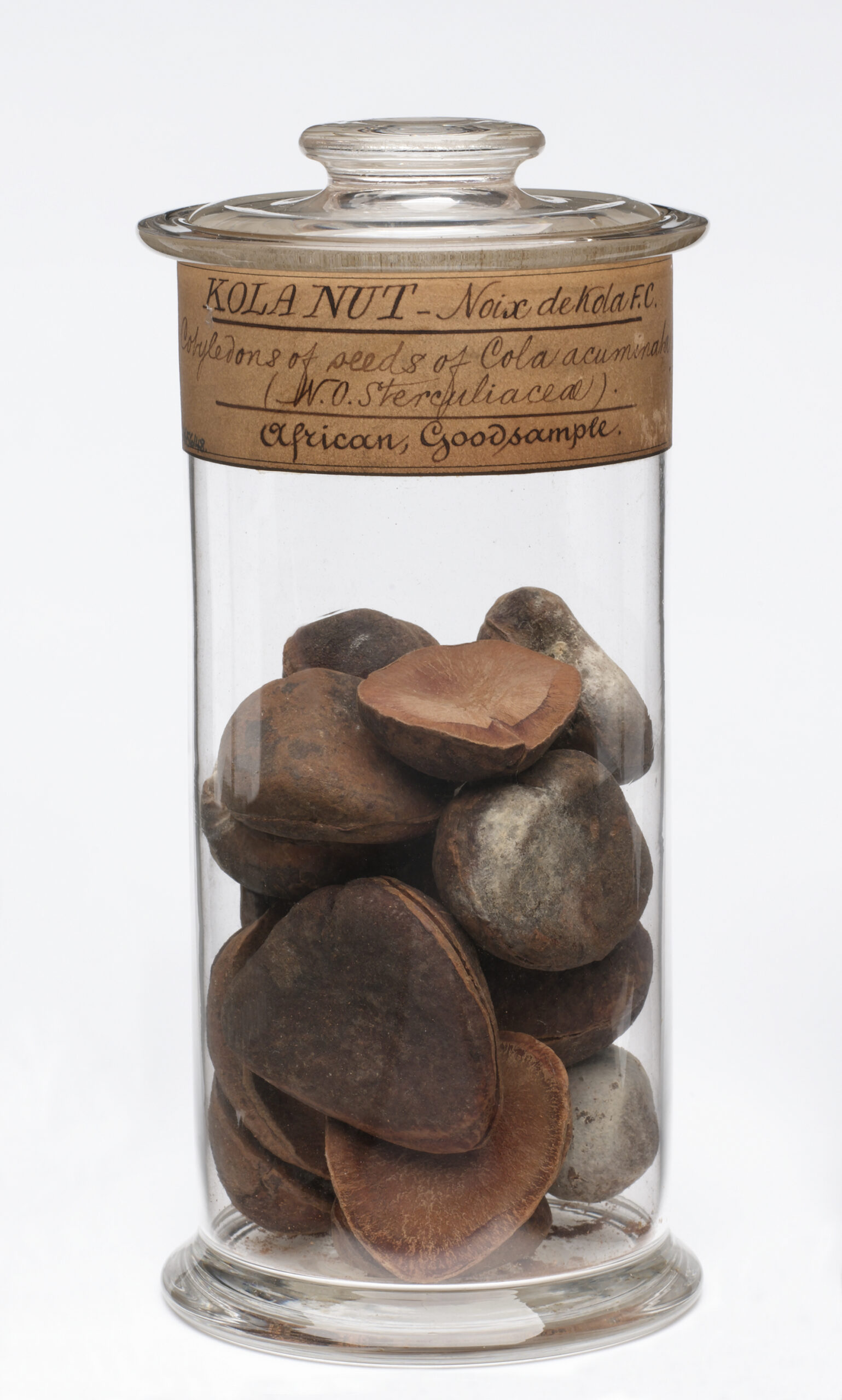
Keep walking to the Exploring Medicine gallery. Look for the jars of ingredients underneath the porcelain elephant carrying the Buddha’s alms bowl. One of these jars contains kola, a brown chestnut-sized nut that is naturally high in caffeine and grows in West Africa. Kola was one of Coca Cola’s original ingredients, but the nut has a longer history of production and consumption.
This jar of kola nuts belonged to Sir Henry Wellcome, an American pharmaceutical entrepreneur who used kola to create caffeinated tablets and elixirs. These drugs were supplied in medicine chests, including some that can be seen elsewhere in this gallery. Other chests created by Wellcome were used by colonial agents and soldiers across Africa. The use of kola is an example of African plants being exploited by European colonisers.
Before Wellcome, kola nuts had been cultivated and traded in West Africa for over one thousand years. They are known by various African names, including goro, ombéné, nangoué, kokkorokou, and matrasa. Kola trees only grow in certain areas, but their nuts have been found hundreds of miles away. The nuts require careful transportation after harvesting, so their historic distribution demonstrates the strength of trade networks across Africa as early as the first millennium AD.
In Africa and among African diaspora communities, kola has a long history of both medicinal use and social importance, and nuts are gifted and eaten today at significant occasions. In popular culture, kola can symbolise friendship, ancestry, and respect. Tania Nwachukwu, a London-based Igbo poet, explored the preservation of cultural and familial history in her 2022 performance, The Kola Nut Does Not Speak English.
Stop 7: Blood transfusion bag
Location: Medicine and Bodies, Level 1
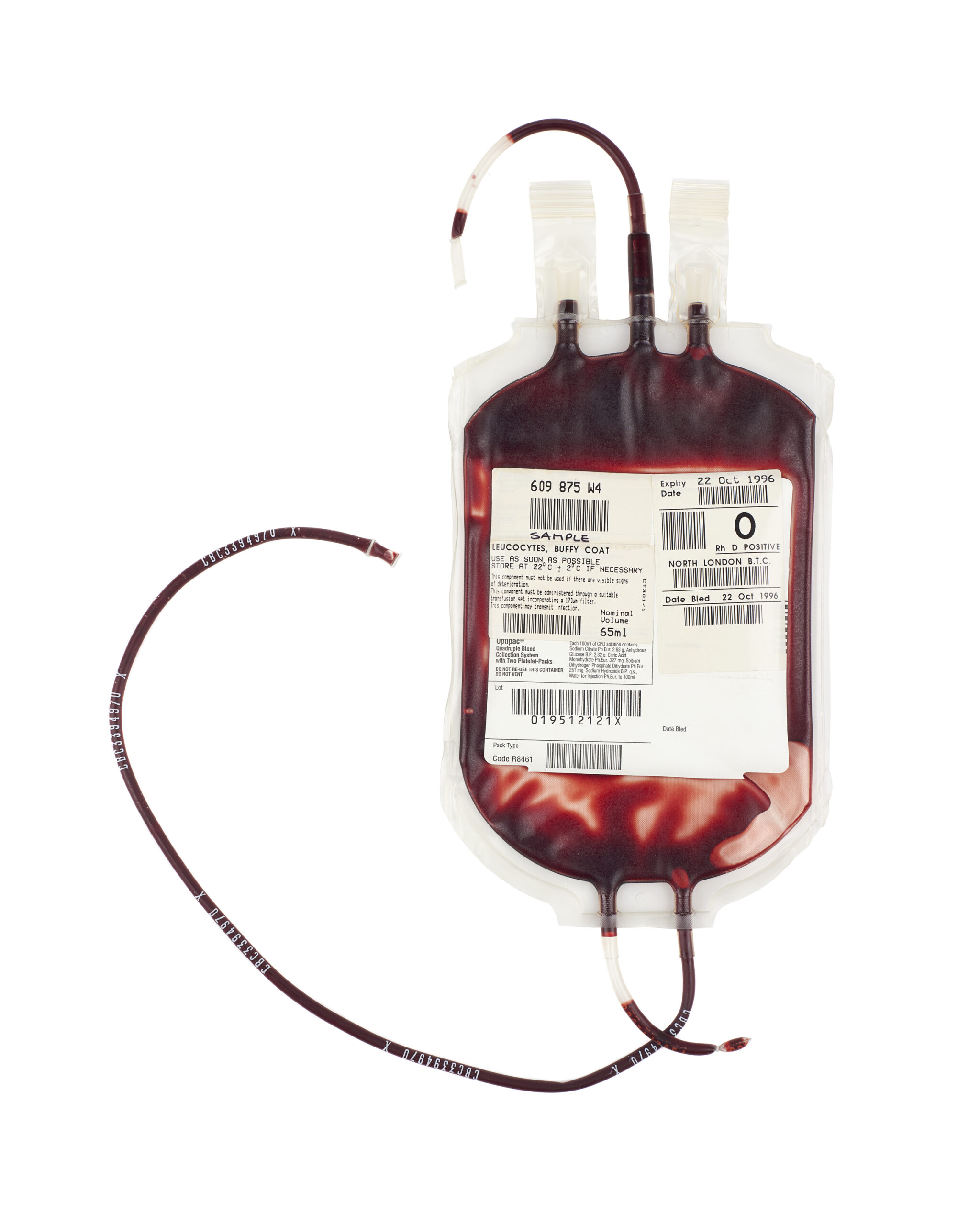
Continue through the gallery to the Medicine and Bodies gallery. To the right, look for a blood transfusion bag (it’s behind the red ‘Measuring the body’ panel).
Blood transfusion bags are used for the collection, preservation, and transportation of human blood for medical procedures. Diseases, like cancer, and incidents where large amounts of blood are lost require blood transfusions to keep a person alive.
During World War II, American surgeon and medical researcher, Charles Drew was appointed by British officials to lead ‘Blood For Britain’. The program collected over 5,500 vials of blood from American volunteers, which were then processed and sent to Britain to treat war victims. It was through this that Drew invented ‘bloodmobiles’, allowing people to donate blood in public spaces, a practice still popular today. The program used Drew’s findings from his doctoral thesis on blood preservation. He proved that blood could be preserved longer than previously thought via separating the blood from the plasma.
Whole blood is made up of red and white blood cells, platelets, and plasma. Plasma is a clear-yellowish liquid which carries blood cells and contains proteins and electrolytes. Unlike whole blood, it can be used with any blood type, is less likely to carry diseases, and can last longer without refrigeration. This makes it ideal for blood transfusions.
He was later assigned to direct a similar program for American soldiers fighting abroad, however, racial segregation of blood donors was part of US military policy, excluding Black Americans from donating blood. Drew campaigned against this racist policy but was not successful, leaving his position in protest. The policy remained in place until 1950. Drew spent the rest of his career as the Head of the Department of Surgery and Chief of Surgery at Howard University, dedicating himself to training Black surgeons and campaigning against racism in the industry.
Stop 8: ‘England and her soldiers’ book
Location: Mathematics: The Winton Gallery, Level 2
Make your way up to the Mathematics gallery and head towards the Life and Death section to the left past the airplane installation where you will find a book with a foldout page in a case. This book was written by Harriet Martineau, with statistical diagrams by renowned nurse Florence Nightingale, who made her name treating soldiers during the Crimean War. But she was not the only courageous woman to go out onto the battlefield. Once voted ’The Greatest Black Briton’, Mary Seacole was a skilled doctor, traveller, entrepreneur, and author.
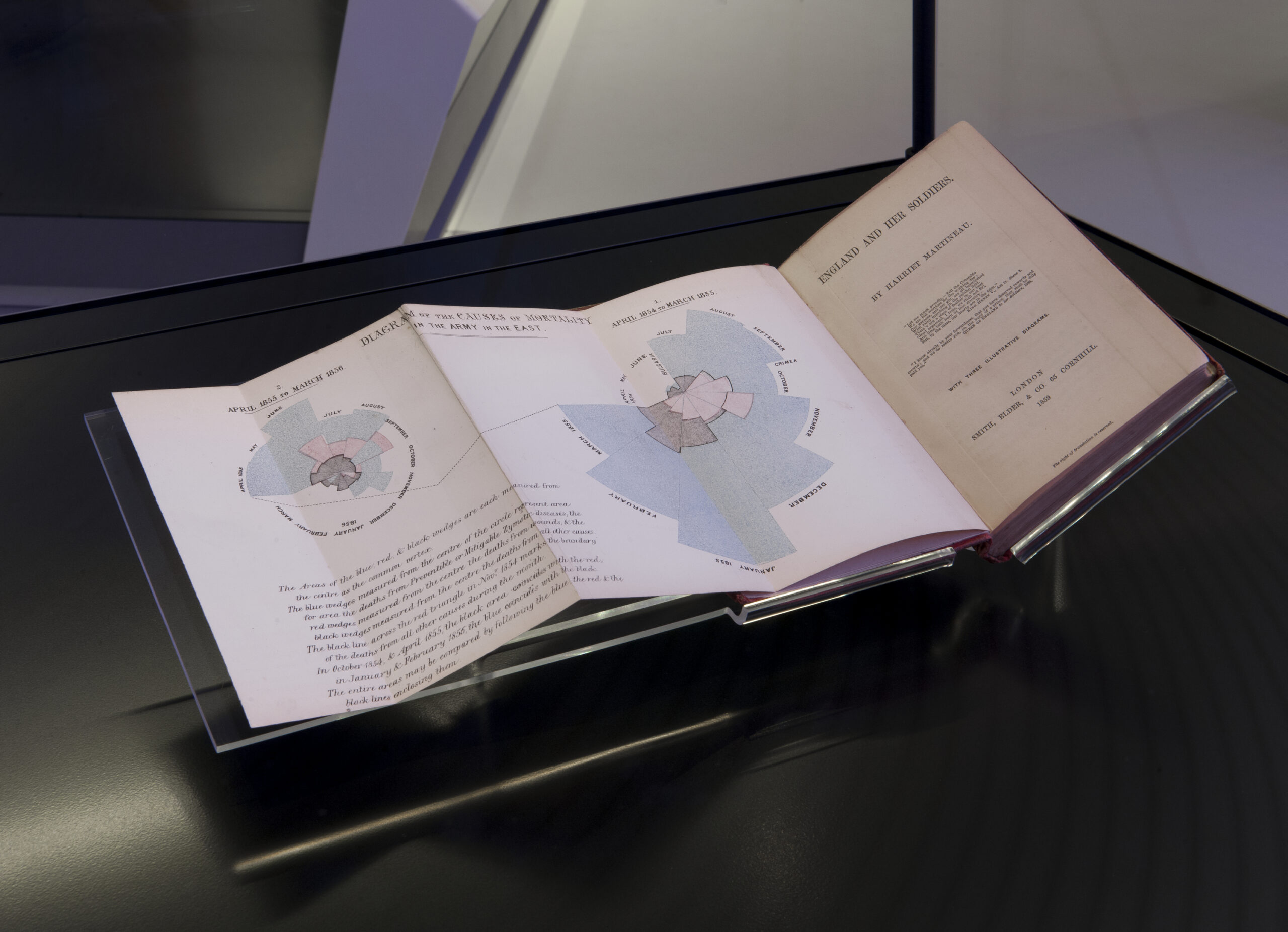
Best known for treating injured soldiers during the Crimean War, Mary had self-funded her journey to Crimea after being rejected from nursing positions. She described the disappointment as ‘a cruel one’ and questioned if her skin colour was a factor. Mary had previously faced racism during her travels, and her rejections may have been influenced by this; however, her lack of formal application and ageism may have also been factors.
In Crimea, Mary set up the British Hotel, where she provided sustenance and boarding for troops and civilians. After battles, she was known to go out to the field to treat the wounded and give comfort to those dying. One of the treatments she employed was the use of mustard. Its essential oil has been shown to have antimicrobial properties.
Mary’s compassion earnt her the nickname ‘Mother Seacole’. Her medical knowledge came from childhood when she helped her mother run a boarding house. There she learned how to look after people and treat them using traditional Jamaican medicine. She treated enslaved African people on the island, as well as British soldiers. Mary continued to practise her nursing skills before making the voyage to Britain in her teens where she supplemented her medical knowledge.
Stop 9: Telephone display
Location: Information Age, Level 2
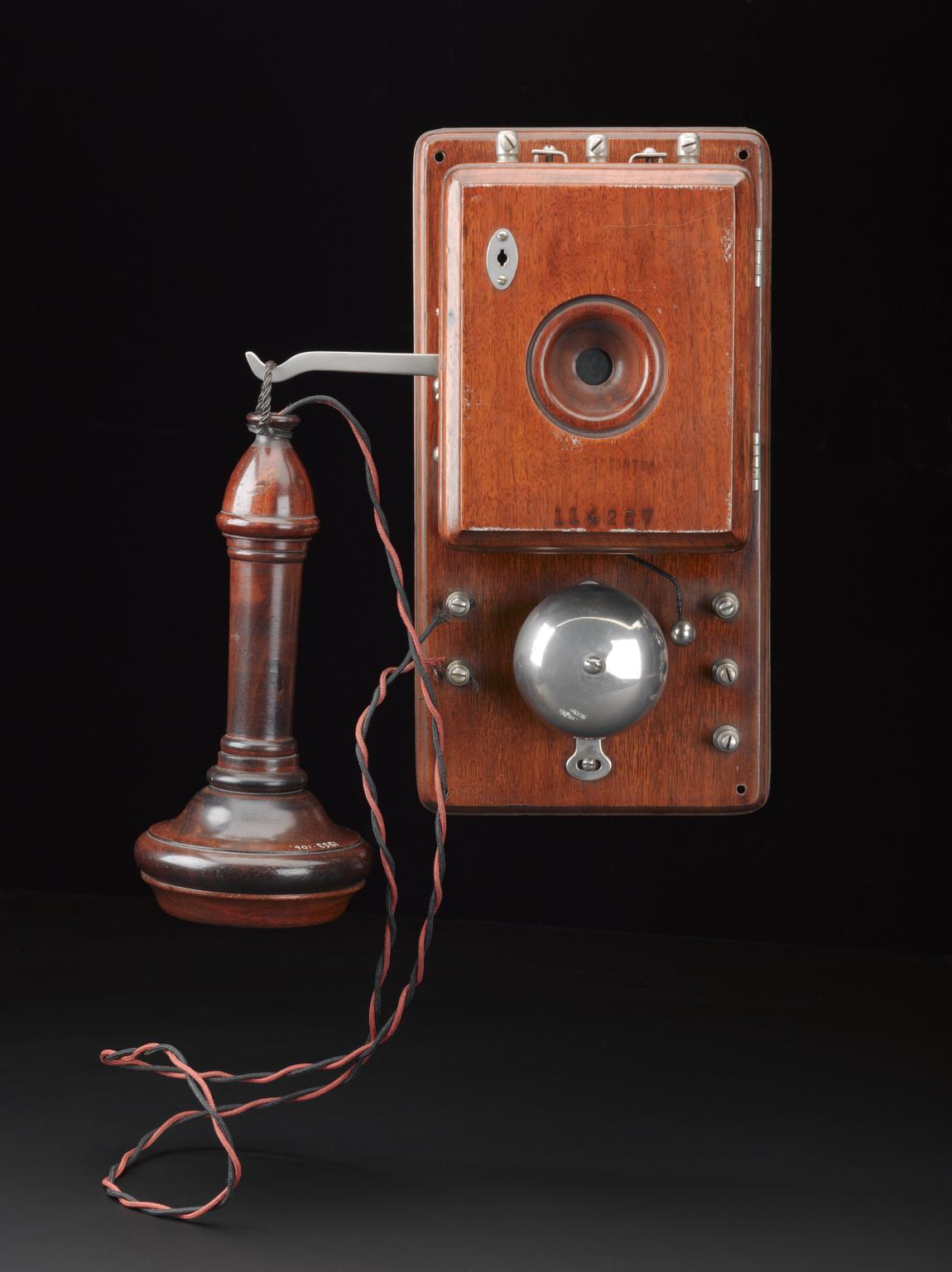
Keep walking through the Mathematics gallery and you will come to the Information Age gallery. In the Exchange section find the glass case against the wall, titled Telephones Ring the Changes.
We usually think of Alexander Graham Bell as the inventor of the telephone, but the real story is more complicated. The display in front of you shows that the modern telephone had several inventors who contributed to the technology. Bell became the first person to be granted a patent for a practical telephone, which cemented his status as the father of the telephone.
Although the patent was signed by Bell, it was also the work of another man: Lewis Latimer. Bell hired Latimer to draw the diagrams, which were a requirement of US patents if the invention couldn’t be understood through words alone. Latimer’s drawings are the reason we can recreate Bell’s invention exactly as it was originally designed (you can see replicas in this display case).
If you keep walking along this display case to the right, you will come to a display on the invention of the microphone. Microphones from the 1870s use carbon to detect sound, and for many decades this was the only practical design. Carbon microphones were widely used in telephones until as late as the 1980s, when a new design became popular: the electret microphone, a type of electrostatic capacitor-based microphone. Patented in 1962 by Black American inventor James West and German inventor Gerhard Sessler, the electret microphone was compact, inexpensive, and highly sensitive. West and Sessler invented the microphone while working at Bell Laboratories, which traces its existence back to Alexander Graham Bell in the 1870s.
Throughout this gallery, you will see changing fashions in telephone design. Many countries manufactured their own telephones, giving them an individual national style. But most phones, regardless of exterior design differences, use West and Sessler’s electret microphone design. And it’s not just phones that rely on them: 90% of the 2 billion microphones manufactured each year are electret microphones, so they are found in products as diverse as hearing aids, baby monitors, and toys.
Stop 10: Aviation pioneer, Bessie Coleman
Location: Flight gallery, Level 3
From the Information Age gallery, walk to Lift D or use the stairs and go up to Level 3. Turn right and look for the entrance to the Flight gallery. Under the overhead walkway towards the centre of the gallery you will find the story of Bessie Coleman.
Bessie Coleman was the first African American woman to receive an international pilot’s licence.
Born in Texas on 26 January 1892, Coleman was one of thirteen children. She showed an aptitude for academia, regularly visiting the local library and completed every grade at her one-room segregated school. Later, she achieved a scholarship to a Baptist school, where she read about famous aviators and developed an interest in flying.
Despite the ban on women flying in the USA, Coleman applied to several flying schools across the US. Though none would take her, she persevered, saying ‘Every no takes me closer to a yes’. She was encouraged by the publisher Robert Abbott to go to France where women could fly. Inspired, Coleman began French lessons and was accepted into the Caudron Brothers’ School of Aviation in the north of France.
On 15 June 1921, she became the first African American woman to receive an international pilot’s licence. Coleman completed additional training in ‘barnstorming’, the style of flying that would make her famous. Derived from flying through the open doors of a barn, barnstorming involved daredevil stunts like loop-the-loops, walking on the wings, and parachuting out of an aeroplane. She became a celebrity known for her glamorous military-style costume, and earning the nicknames ‘Queen Bess’ and ‘Brave Bessie’.

Her ultimate dream was to open a flying school for Black people in the US. She toured the country teaching African Americans and women to fly and refused to perform anywhere that discriminated against them.
On April 30th 1926, Coleman, along with co-pilot William Willis, died during a test flight. Coleman had three funerals, and around 10,000 people attended her memorial service. For years, aeroplanes flew annually over her grave.
In 1929, Black aviator Lt. William J. Powell established the Bessie Coleman Aero Club. Coleman paved the way for female African American aviators and when Mae Jemison became the first African American woman in space in 1992, she carried a picture of her heroine, Bessie Coleman.